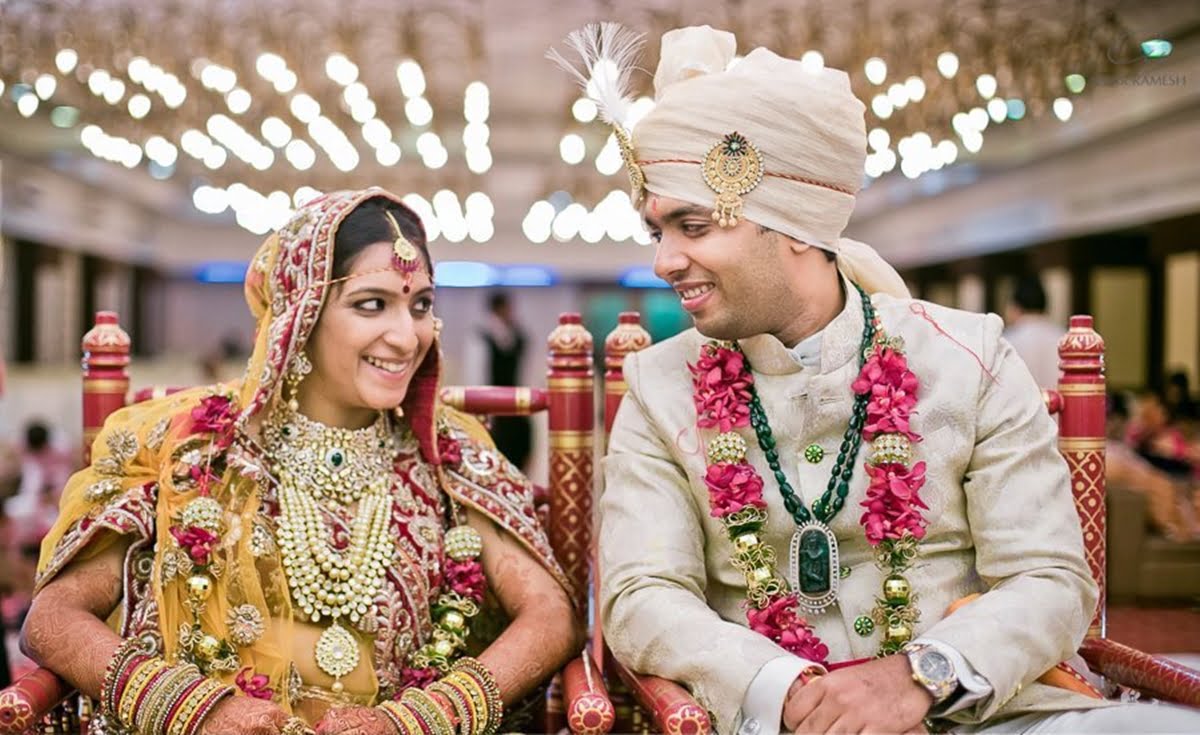The heteronormative Indian weddings are an affair of endless functions, traditional practices, pujas that are followed often varying on the basis of region, religion, ethnicity, community that families belong to. Growing up in a Marwadi family and attending weddings, there are certain traditional practices (rasams) I have seen that are peculiar to this community. In this article, I would like to discuss one such rasam, called bahu-aagman, that is unique to Marwadi weddings. Marwadi community is already quite known for the conservative and misogynistic practices rooted in its culture and so, many might feel that this rasam is not even that important topic to discuss. But that is my very reason, to reflect on the fact that even in the tiniest things, the society doesn’t leave a minute chance to show a woman her place.
Marwadi community is already quite known for the conservative and misogynistic practices rooted in its culture and so, many might feel that the rasam of bahu-aagman is not even that important topic to discuss.
In a Marwadi wedding, once all the wedding functions are over, one of the final practices is ‘bahu-aagman’, where the bride is welcomed to her in-laws place. It starts with the griha-pravesh of the newly wedded couple and after the aarti and other rituals, the welcome is followed with ‘fun-games’ to be performed by the couple. Amongst these rituals in bahu-aagman, there is this one game where around 7 plates (thalis) are kept in a vertical line. The groom is given a make-believe sword and is asked to move the plates away with the pointed end of the sword. Meanwhile, the bride is expected to bend down and pick up all these plates which are now disarranged. And funnily enough, she is asked to be cautious to not to make any noise while picking up the plates and pile them up along one after other and finally give it to her mother-in-law. The reasoning for being cautious while picking up the plates in bahu-aagman and not making any noise is the belief that if she makes any noise while piling up the plates, there would be disharmony in the family as the noise coming through utensils symbolises that the girl would create nuisance in the family. In hindsight, I now gret being an enthusiastic spectator of bahu-aagman, now that I see the patriarchal overtones and the condescending tone of this ritual.
Also read: Indian Matchmaking: Capitalising On The Arranged Marriage Market & Its Anxieties
Let me break it down. In bahu-aagman, firstly the groom is asked to disarrange the plates alignment with the sword like tool which signifies his authority/power; that he is the one who decides what is to be done. Like there were not enough practices already to establish the so-called power of the man; that society invented this whole fun-game to being with! Then symbolism of harmony is conveyed through the noise of utensils, because, of course, that’s where the women belong – kitchen. And most importantly, it’s ‘only her’ who is responsible for the harmony of the family, even if it’s the man who has brought in the disturbance (Well, if the entire game is of symbolism then I might as well go one step ahead and take the liberty to see this disarrangement created by the groom as a disturbance created by him in the first place). In bahu-aagman, the bride is now expected to be cautious while picking up the thalis, which is in a way, a subtle way of letting her know that for the honour of the family in future, she’s got to suffer.
In bahu-aagman, the bride is now expected to be cautious while picking up the thalis, which is in a way, a subtle way of letting her know that for the honour of the family in future, she’s got to suffer.
It has been ingrained in all of us right from our childhood through different but recurrent means that how it’s only a woman who can make or break a home. We all were told again and again that it’s the responsibility of a woman to maintain this harmonious balance in the family and the same has been glorified again and again. Our two great epics-Mahabharat and Ramayan are based on the same narratives of how it is a woman who wreaks havoc.
Also read: The Matrimony Market And The Eternal Quest For An ‘Ideal’ Bride
Coming back to the bahu-aagman game/rasam that takes place mostly in all the Marwadi families, I have myself been guilty of being the cheerful spectator of the same. I have seen my sisters and sisters-in-law being welcomed to the family with this traditional game and seen them give their best performance to it. As I grew up, I wondered what that newly wedded bride herself would be feeling when all the eyes are on her during bahu-aagman and all the hope of the family’s harmonious life in her seven cautious steps – how dramatic! Just like “ek chutki sindoor ki keemat” moment…, “inn saat steps ki keemat tum kya jano any random babu.”
I have seen my family members enjoying the bahu-aagman rasam and cheering for the bahu of the family to do well in this exam and with a feminist reawakening, I now wonder how with each next step in bahu-aagman, the spirit of a care-free girl in the bride is replaced by a bahu bearing all the honour of the family and societal expectations by regressive rituals that should have been long done away with!
Amruta is a Chartered accountant and Young India Fellow and is working as a Consultant with Ernst & Young. She loves reading, listening to stories and writing (most of the time rambles her own musings). Religiously follows the motto “Experience over things” and is trying to enrich her life through the same. She can be found on Facebook, Instagram and Twitter.
Featured Image Source: myweddingplanning.in




